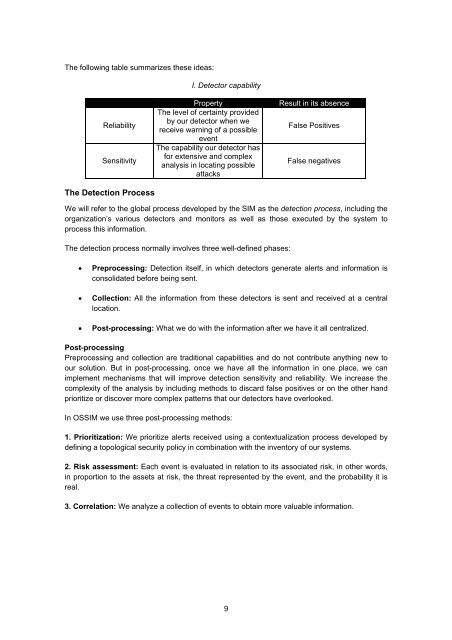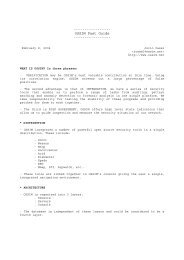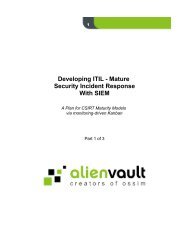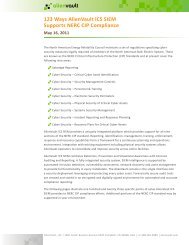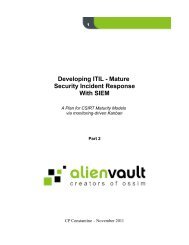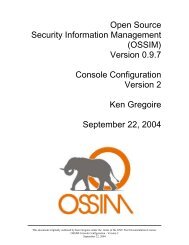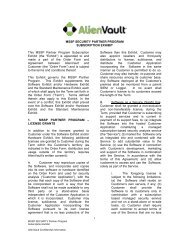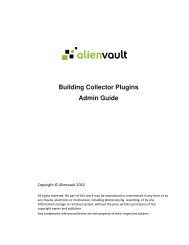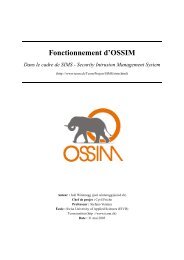ossim - AlienVault
ossim - AlienVault
ossim - AlienVault
Create successful ePaper yourself
Turn your PDF publications into a flip-book with our unique Google optimized e-Paper software.
The following table summarizes these ideas:<br />
I. Detector capability<br />
Reliability<br />
Sensitivity<br />
The Detection Process<br />
Property<br />
The level of certainty provided<br />
by our detector when we<br />
receive warning of a possible<br />
event<br />
The capability our detector has<br />
for extensive and complex<br />
analysis in locating possible<br />
attacks<br />
Result in its absence<br />
False Positives<br />
False negatives<br />
We will refer to the global process developed by the SIM as the detection process, including the<br />
organization’s various detectors and monitors as well as those executed by the system to<br />
process this information.<br />
The detection process normally involves three well-defined phases:<br />
• Preprocessing: Detection itself, in which detectors generate alerts and information is<br />
consolidated before being sent.<br />
• Collection: All the information from these detectors is sent and received at a central<br />
location.<br />
• Post-processing: What we do with the information after we have it all centralized.<br />
Post-processing<br />
Preprocessing and collection are traditional capabilities and do not contribute anything new to<br />
our solution. But in post-processing, once we have all the information in one place, we can<br />
implement mechanisms that will improve detection sensitivity and reliability. We increase the<br />
complexity of the analysis by including methods to discard false positives or on the other hand<br />
prioritize or discover more complex patterns that our detectors have overlooked.<br />
In OSSIM we use three post-processing methods:<br />
1. Prioritization: We prioritize alerts received using a contextualization process developed by<br />
defining a topological security policy in combination with the inventory of our systems.<br />
2. Risk assessment: Each event is evaluated in relation to its associated risk, in other words,<br />
in proportion to the assets at risk, the threat represented by the event, and the probability it is<br />
real.<br />
3. Correlation: We analyze a collection of events to obtain more valuable information.<br />
9


